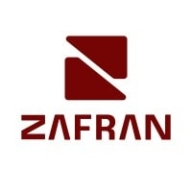


Microsoft Defender for Cloud and PortSwigger Burp Suite Enterprise Edition compete in security software, with a focus on enhancing security and compliance in cloud environments and web applications, respectively. Microsoft Defender for Cloud seems to have the upper hand due to its comprehensive integration with Azure services, offering a more integrated security posture management experience.
Features: Microsoft Defender for Cloud provides visibility into security setups, AI and ML-based detections, and strong remote workforce capabilities. Its seamless integration with Azure supports security posture management. PortSwigger Burp Suite Enterprise Edition features extensive vulnerability assessments, including active scanning and CI/CD integration, identifying web application vulnerabilities efficiently.
Room for Improvement: Microsoft Defender for Cloud could reduce false positives and improve comment functionality on alerts, real-time monitoring, and documentation clarity. PortSwigger Burp Suite Enterprise Edition faces false positives, requiring better scan stability and features like static and dynamic code analysis.
Ease of Deployment and Customer Service: Microsoft Defender for Cloud supports deployment across public, hybrid, and private clouds, though customer service experiences vary with some delays. On-premises deployment is required for PortSwigger Burp Suite Enterprise Edition, with inconsistent customer service often linked to query complexity.
Pricing and ROI: Microsoft Defender for Cloud's competitive pricing varies by usage and features, integrated with Azure services. Some users find costs high but justified by security benefits. PortSwigger Burp Suite Enterprise Edition is more expensive, yet provides value for crucial security assessment features, appealing to web security priorities.



Zafran Security integrates with existing security tools to identify and mitigate vulnerabilities effectively, proving that most critical vulnerabilities are not exploitable, optimizing threat management.
Zafran Security introduces an innovative operating model for managing security threats and vulnerabilities. By leveraging the threat exposure management platform, it pinpoints and prioritizes exploitable vulnerabilities, reducing risk through immediate remediation. This platform enhances your hybrid cloud security by normalizing vulnerability signals and integrating specific IT context data, such as CVE runtime presence and internet asset reachability, into its analysis. No longer reliant on patch windows, Zafran Security allows you to manage risks actively.
What are the key features of Zafran Security?
What benefits can users expect from Zafran Security?
In industries where security is paramount, such as finance and healthcare, Zafran Security provides invaluable protection by ensuring that only exploitable vulnerabilities are addressed. It allows entities to maintain robust security measures while allocating resources efficiently, fitting seamlessly into existing security strategies.
Microsoft Defender for Cloud is a comprehensive security solution that provides advanced threat protection for cloud workloads. It offers real-time visibility into the security posture of cloud environments, enabling organizations to quickly identify and respond to potential threats. With its advanced machine learning capabilities, Microsoft Defender for Cloud can detect and block sophisticated attacks, including zero-day exploits and fileless malware.
The solution also provides automated remediation capabilities, allowing security teams to quickly and easily respond to security incidents. With Microsoft Defender for Cloud, organizations can ensure the security and compliance of their cloud workloads, while reducing the burden on their security teams.
Burp Suite Enterprise Edition is an automated web vulnerability scanner, designed to enable enterprises to scale security across their web portfolios and achieve DevSecOps. Automate trusted Burp scans, integrate web security testing with development, and free your application security to support software development.
We monitor all Vulnerability Management reviews to prevent fraudulent reviews and keep review quality high. We do not post reviews by company employees or direct competitors. We validate each review for authenticity via cross-reference with LinkedIn, and personal follow-up with the reviewer when necessary.